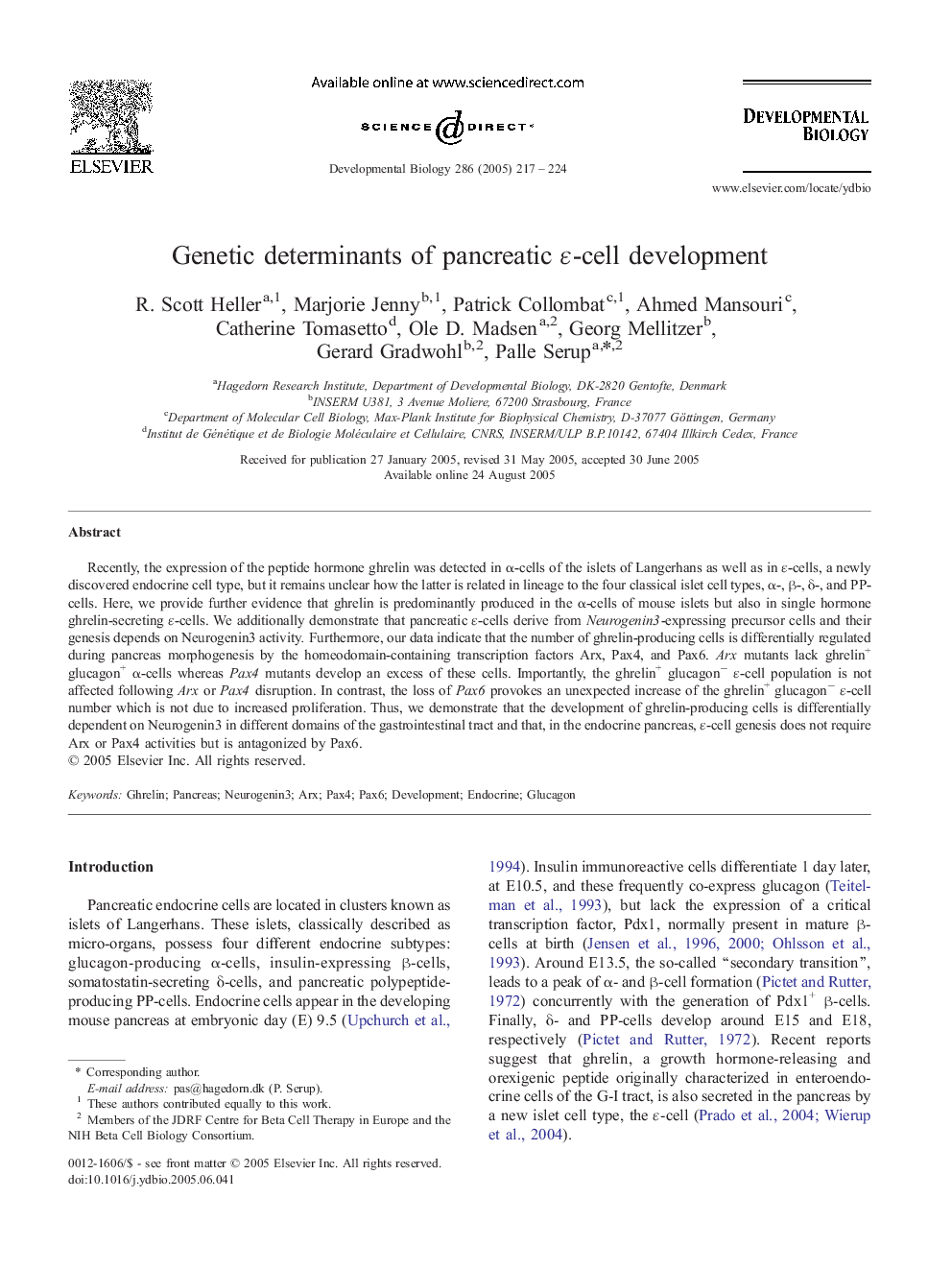| Article ID | Journal | Published Year | Pages | File Type |
|---|---|---|---|---|
| 10934153 | Developmental Biology | 2005 | 8 Pages |
Abstract
Recently, the expression of the peptide hormone ghrelin was detected in α-cells of the islets of Langerhans as well as in ε-cells, a newly discovered endocrine cell type, but it remains unclear how the latter is related in lineage to the four classical islet cell types, α-, β-, δ-, and PP-cells. Here, we provide further evidence that ghrelin is predominantly produced in the α-cells of mouse islets but also in single hormone ghrelin-secreting ε-cells. We additionally demonstrate that pancreatic ε-cells derive from Neurogenin3-expressing precursor cells and their genesis depends on Neurogenin3 activity. Furthermore, our data indicate that the number of ghrelin-producing cells is differentially regulated during pancreas morphogenesis by the homeodomain-containing transcription factors Arx, Pax4, and Pax6. Arx mutants lack ghrelin+ glucagon+ α-cells whereas Pax4 mutants develop an excess of these cells. Importantly, the ghrelin+ glucagonâ ε-cell population is not affected following Arx or Pax4 disruption. In contrast, the loss of Pax6 provokes an unexpected increase of the ghrelin+ glucagonâ ε-cell number which is not due to increased proliferation. Thus, we demonstrate that the development of ghrelin-producing cells is differentially dependent on Neurogenin3 in different domains of the gastrointestinal tract and that, in the endocrine pancreas, ε-cell genesis does not require Arx or Pax4 activities but is antagonized by Pax6.
Related Topics
Life Sciences
Biochemistry, Genetics and Molecular Biology
Cell Biology
Authors
R. Scott Heller, Marjorie Jenny, Patrick Collombat, Ahmed Mansouri, Catherine Tomasetto, Ole D. Madsen, Georg Mellitzer, Gerard Gradwohl, Palle Serup,
